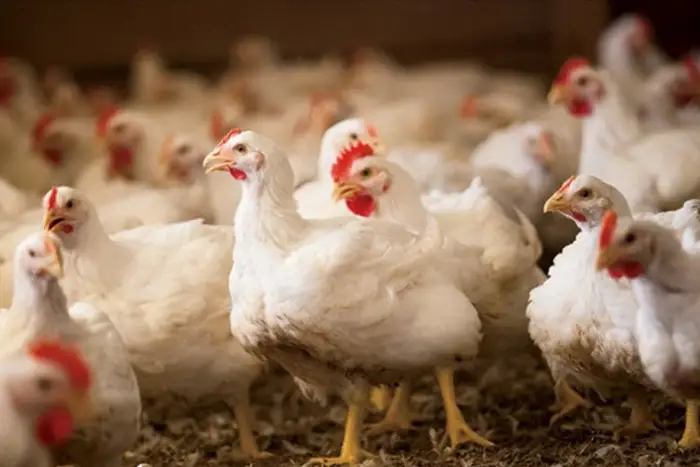Broiler breeder farm
What came first, the chicken or the egg? The answer to this age-old question is more complicated than you might think! Those cute fluffy chicks that arrive on the broiler farm have to come from somewhere, and the answer is the incubator. But where does the hatchery get the eggs needed to hatch a chick? That’s where broiler breeder farms come in. We could go on and on, back through the breeding program of broiler chickens, but let’s keep it simple and begin with the parents of broiler chickens.
Broiler breeder farms, operated by broiler hatching egg farmers, raise female (hens) and male (roosters) birds who are the parents of broiler chickens. These hens and roosters mate to produce fertilized eggs (not the same as the table eggs we eat), which are sold to broiler hatcheries for incubation.
There are two stages in a broiler breeder’s life – rearing and breeding. Farmers have separate barns called pullet barns, where the chicks are raised until they are ready to be transferred to the breeding barns. A pullet is the technical term for a young female chicken before she starts to lay eggs. During the rearing stage, males and females are raised separately because of their different growth rates and nutritional requirements. Later, the females and males will be moved into the breeding barn.
Hens begin laying eggs at approximately 26 weeks of age. They will lay between 145 and 150 eggs before the end of their expected lay period approximately 35 to 40 weeks later. Broiler breeder farms have automated egg gathering systems where the eggs gently roll from the nest box onto a conveyor belt to an egg gathering station. Broiler-hatching eggs are collected several times a day and only high-quality ones are sent to the hatchery to be hatched into broiler chicks. The hatchery picks up the hatching eggs from the broiler breeder farm one or more times per week.
Hatchery
A great deal of meticulous care goes into making sure those yellow balls of chirping fluff hatch from their shells as healthy chicks ready to be raised on a broiler farm.
Hatcheries purchase fertilized eggs from hatching egg producers. Hatcheries are registered with the Canadian Food Inspection Agency (CFIA), and they must abide by the Hatchery Regulations. The regulations govern the cleanliness of the hatchery, which is especially important to keep the incubators free of pathogens that might cause the chicks to become ill or result in foodborne illness.
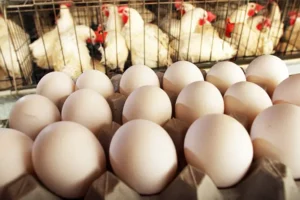
When they arrive from the hatching egg farm, eggs are placed in incubators where they are kept warm and automatically turned gently at regular intervals. Eggs hatch around the 21-day mark. The incubators, or hatchers, are then opened to reveal thousands of chicks who have pecked their way out of their shells. The remainder of the yolk sac, that fed the growing chick during incubation, has now been absorbed into the chick’s body and provides it with adequate nourishment for the first 72 hours of life.
Fertilized eggs are not like the ones you get at the grocery store. The grocery store eggs are unfertilized and come from hens raised specifically to lay eggs for human consumption. Fertilized eggs that hatch into chicks raised for meat production are called broiler-hatching eggs, and they are fertilized naturally with the male (rooster) mounting the female (hen).
At the hatchery, the chicks can be vaccinated to protect them from common poultry diseases, just like we are vaccinated as babies against common human diseases.
It is really important that the chicks are kept warm and protected from any drafts as they are readied for transport. They are carefully placed in clean and disinfected crates, free of any sharp edges that might injure them. Once in the crate and on the clean, climate-controlled transport truck, they are ready for the journey to their new home: a barn where they will be raised for about 35 days until they become broiler chickens ready for market.
Chicken Farm
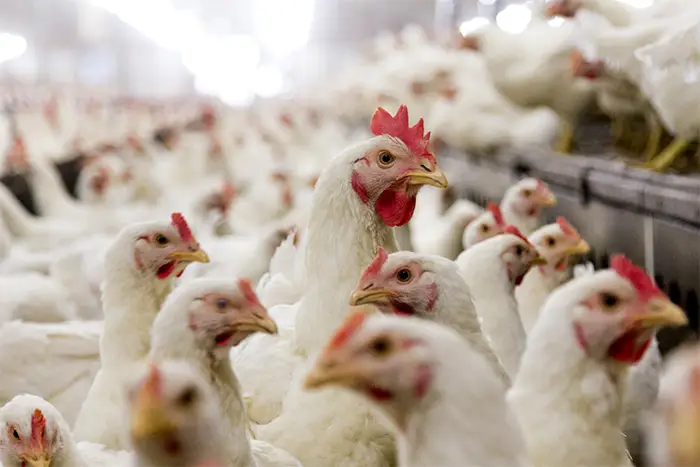 Chicken farmers are busy preparing their barns for new flocks even before the chicks break through the fertilized eggs at the hatchery. The entire barn and all equipment is cleaned and readied for the arrival of the new chicks, including putting down a fresh layer of soft, clean bedding. Everything must be in order for the new arrivals because they will require a lot of care.
Chicken farmers are busy preparing their barns for new flocks even before the chicks break through the fertilized eggs at the hatchery. The entire barn and all equipment is cleaned and readied for the arrival of the new chicks, including putting down a fresh layer of soft, clean bedding. Everything must be in order for the new arrivals because they will require a lot of care.
Transportation
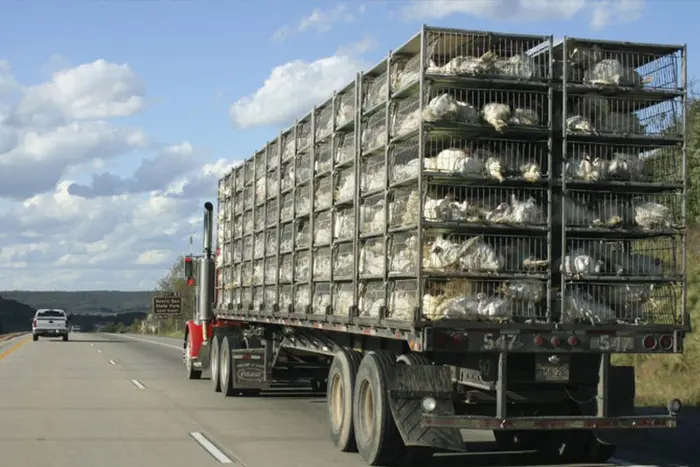 In chicken farming, our birds are being raised for meat. That means the day will come when the birds that farmers have worked hard to keep healthy and safe will be removed from the barn and sent to the processing plant to be humanely slaughtered and then cleaned and packaged for food. Farmers, catchers and processors work together so this happens with the least amount of discomfort for the chickens.
In chicken farming, our birds are being raised for meat. That means the day will come when the birds that farmers have worked hard to keep healthy and safe will be removed from the barn and sent to the processing plant to be humanely slaughtered and then cleaned and packaged for food. Farmers, catchers and processors work together so this happens with the least amount of discomfort for the chickens.
There is a lot of work ahead for the catching team who will load all the chickens, each around 2 kilograms, into crates and onto the transport truck. With catching teams of four or five, this means each person will lift about 16,000 kilograms for one barn. How’s that for a workout!
Processing
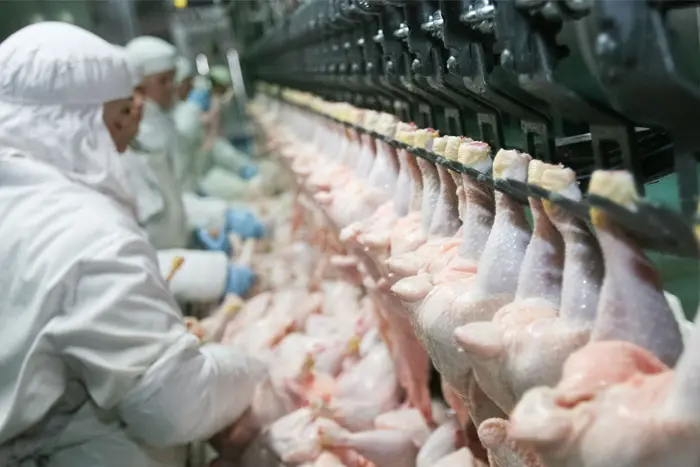 Broiler chickens are transported to processing plants that are inspected by federal or provincial government officials.
Broiler chickens are transported to processing plants that are inspected by federal or provincial government officials.
At the plant, the first step is for birds to be “stunned.” This ensures they are unconscious and unable to feel pain before they are slaughtered. There are two different methods that are commonly used: electric and gas stunning. Both methods are humane and are approved in international animal welfare guidelines.

